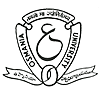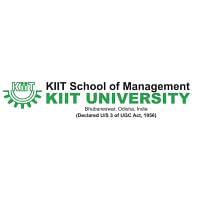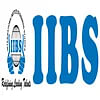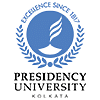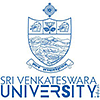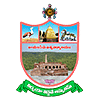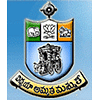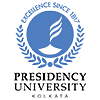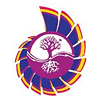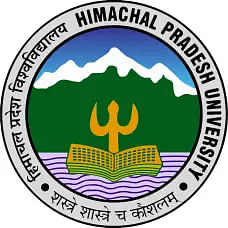
Table of Contents
TS CPGET exam pattern 2025 will be released by Osmania University to provide an overview of the Common postgraduate admission test. Osmania University will publish TS CPGET exam pattern 2025 on its official website. TS CPGET 2025 exam pattern includes information such as the total number of questions, marks, exam duration, test mode, and marking scheme.
In this section, let us have a look at the TS CPGET Exam Pattern. Candidates preparing for the exam should have proper knowledge of the exam pattern to do well in the exams.
TS CPGET 2025 Exam Pattern
TS CPGET 2025 exam will be conducted online mode by the Osmania University of Hyderabad. The exam is conducted for admissions into their undergraduate, postgraduate, and research-level courses. Check out the TS CPGET eligibility 2025 to see whether you cleared all of the criteria to take the exam. The TS CPGET 2025 is a half-hour-long examination that consists of multiple-choice questions to be answered on an OMR answer sheet.
The TS CPGET exam pattern is different for all the courses offered with the TS CPGET Exam, and we have listed it down accordingly.
The whole TS CPGET (CPGET) exam pattern is as follows:
- Exam Mode: TS CPGET (CPGET) examination will be done entirely online.
- Duration: The entrance tests in all the subjects will be of 90 minutes in duration the question paper consists of 100 objectives (multiple choice only) type questions for 100 marks.
- Topics: The entrance test will consist of any 3 or 4 varieties of objective type items such as analogies, classification, matching, comprehension of a research study/experiment /theoretical point of view, etc., with multiple answers besides the usual multiple-choice items. The items will be framed only from the syllabus of the entrance test.
- Pattern: The pattern of the Entrance Test for Admission into M.Sc. Biochemistry, Environmental Science, Forensic Science, Genetics and Microbiology are as follows. Candidates have to appear for a common entrance test, namely BCESFSG&M comprising Part-A (Chemistry for 40 Marks) and Part-B (One of the optional studied at B.Sc. level among the optional subjects: Physics, Botany, Zoology, Genetics, Microbiology and Biochemistry) for 60 Marks.
The pattern of the Entrance Test for Admissions into M.Sc. Bio-Technology comprising Part-A (Chemistry for 40 marks) and part-B (Bio Technology for 60 Marks)
Following is the complete course wise exam pattern:
For M.Sc. Biochemistry, Environmental Science, Genetics and Microbiology:
| Parts | Subjects | Marks |
| Part A | Chemistry | 40 |
| Part B | Botany, physics, zoology, genetics, biochemistry, microbiology | 60 |
For admission into M.Sc. Biotechnology:
| Parts | Subjects | Marks |
| Part A | Chemistry | 40 |
| Part B | Biotechnology | 60 |
Question Structure for Different Courses
The question of different courses for the TS CPGET exam 2025 has been shared below for reference.
- UG Courses: All of the 100 questions in the question paper will be mostly based on Physics, Chemistry, Maths, and English.
- PG Courses: All of the 100 questions will be based on the corresponding undergraduate course taken by the candidate in the past.
- M.P. Ed Course: The TS CPGET 2025 entrance test will be of 75 multiple choice objective questions for 75 marks. The remaining 25 marks will be awarded by the Department of Physical Education, Osmania University.
TS CPGET Exam Pattern for MA
The question paper pattern for the MA:
| Section | Question Number | Domains |
| A | 1 - 40 | Mathematics |
| B | 41 - 55 | General English |
| C | 56 - 70 | General Knowledge |
| D | 71 - 85 | Current Affairs |
| E | 86 - 100 | General Economics |
TS CPGET Exam Pattern for MBA
The question paper pattern for the MBA course:
| Part | Section | Question Number | Domains |
| I | A | 1 - 25 | Verbal Ability |
| B | 26 - 40 | General Knowledge | |
| II | C | 41 - 70 | Numerical Data Analysis |
| D | 71 - 100 | Reasoning and Intelligence |
TS CPGET Exam Pattern 2025 for M.Sc
The question paper pattern for the MSc course:
| Section | Question Number | Domains |
| A | 1 - 34 | Chemistry |
| B | 35 - 67 | Physics |
| C | 68 - 100 | Mathematics |
TS CPGET Books 2025
TS CPGET does not have any prescribed books for the preparation of its entrance test. However, the books of other entrance tests might as well be just as helpful and they can be used for TS CPGET exam.
Some of the TS CPGET books 2025 that can be helpful for the preparation are as follows.
| Name of the book | Author / Publications |
| M.Com Entrance TestGuide | Sima Kumari |
| JNU Economic Entrance Examination | Arihant Publications |
| Perfect Study Resource for Delhi University | Arihant Publications |
TS CPGET Syllabus 2025
The questions paper will be based on the type of course that the candidate has applied for during the registration process for the exam.
Candidates will be assessed differently for each postgraduate program. Make sure that you follow the TS CPGET eligibility to check whether you have cleared all of the criteria for taking the exam. The courses covered under the TS CPGET 2025 syllabus are:
- Commerce
- Education
- Science
- 5 Year Integrated Program
- PGDC
FAQs on OUCET Exam Pattern
Q: What is the TS CPGET exam pattern 2025?
As per the TS CPGET exam pattern there will be total 100 objectiove questions in each section for 100 marks. Applicants will be given 90 minutes to complete the paper. The questions will be asked in different format for all the subjects. Students must check the detailed subject-wise pattern.
Q: What is the question structure of the TS CPGET exam 2025?
There are total three courses for the TS CPGET exam and the question structure of all the courses is different. The courses are Undergraduate, Postgraduate, and M.P.Ed. The UG and PG consist of 100 questions each and the M.P.Ed course consist of 75 questions.
Q: What is the TS CPGET 2025 MBA exam pattern?
The MBA exam pattern for the TS CPGET exam 2025 states that the question is divided into two parts. Each part having two sections. Section A is Verbal Ability covered from question number 1 - 25, Section B is General Knowledge covered from question number 26 - 40, Section C is Numerical Data Analysis covered from question number 41 - 70, and Section D is Reasoning and Intelligence covered from question number 71 - 100.
Q: What is the TS CPGET 2025 MSc exam pattern?
There are total three sections in the TS CPGET MSc exam pattern. Section A is Chemistry covered from question number 1 - 34, Section B is Physics covered from question number 35 - 67, and Section C is Mathematics covered from question number 68 - 100.
Q: Which books are best for TS CPGET exam preparation?
The list of preparation books for the TS CPGET exam are M.Com Entrance TestGuide by Sima Kumari, JNU Economic Entrance Examination by Arihant Publications, and Perfect Study Resource for Delhi University by Arihant Publications.
